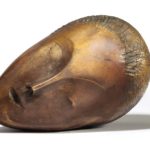WASHINGTON, D.C.- A tropical forest is easy to cut down, but getting it back is another story. In a special issue of the journal Forest Ecology and Management, leading researchers at the Smithsonian in Panama and across Latin America offer new insights…
Smithsonian Studies Landslides: How Rainfall Dried Up Panama’s Drinking Water
WASHINGTON, DC.- To understand the long-term effects of a prolonged tropical storm in the Panama Canal watershed, Robert Stallard, staff scientist at the Smithsonian Tropical Research Institute and research hydrologist at the U.S. Geological Survey, an…
Smithsonian Scientists Find that First Rainforests Arose When Plants Solved Plumbing Problem
WASHINGTON, D.C.- A team of scientists, including several from the Smithsonian Institution, discovered that leaves of flowering plants in the world’s first rainforests had more veins per unit area than leaves ever had before. They suggest that thi…
Online Access to the Plants of the World Is Available
WASHINGTON, DC.- For centuries, jungle explorers from Europe and North America have created art of the plants they discover—pressing bright flowers and green tendrils onto herbarium sheets for prestigious museums and plant collections. But scienti…
Tropical Forest Diversity Increased During Ancient Global Warming Event
WASHINGTON, DC.- The steamiest places on the planet are getting warmer. Conservative estimates suggest that tropical areas can expect temperature increases of 3 degrees Celsius by the end of this century. Does global warming spell doom for rainforests?…







